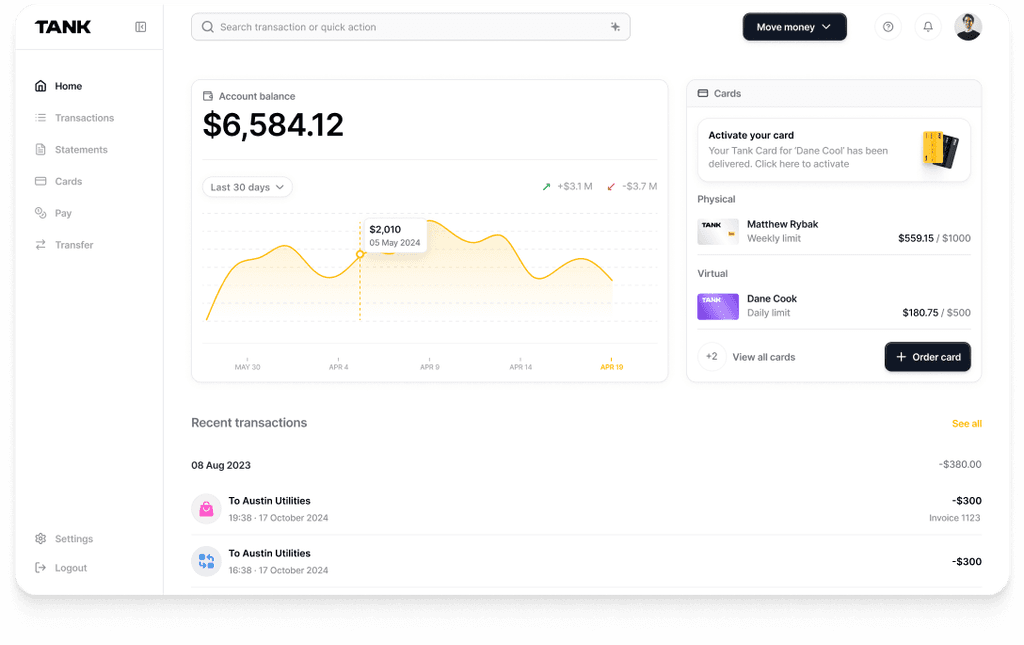From Divide to Development: UNCTAD’s Vision for Inclusive AI
Summary
UNCTAD’s 2025 report warns that AI’s immense potential could deepen inequality if left unregulated. Concentrated in wealthy nations, AI risks sidelining developing countries. The report calls for infrastructure, data access, skills, and inclusive policies to harness AI for shared prosperity.
Key insights:
AI Divide: AI leadership is concentrated in a few nations, leaving others at risk of technological dependency.
Worker Impact: AI affects both cognitive and physical jobs, threatening employment in low-cost labor economies.
Three Leverage Points: Infrastructure, data, and skills are essential for inclusive AI readiness.
“5 As” Framework: Availability, affordability, awareness, ability, and agency form the foundation of catch-up strategies.
Policy Gaps: Most developing countries lack national AI strategies, risking further marginalization.
Global Governance: Inclusive AI governance needs multilateral cooperation and equitable standard-setting.
Introduction
Artificial Intelligence (AI) stands as the defining technology of our era. From its early emergence as a niche field of computer science, it has rapidly become a global force transforming how societies produce, communicate, and govern. Unlike previous waves of innovation, AI does not merely enhance physical tasks it now encroaches into cognitive domains traditionally reserved for human intelligence. The UNCTAD Technology and Innovation Report 2025 (TIR 2025) situates AI as both an unparalleled opportunity and a pressing governance challenge. If harnessed inclusively, AI could accelerate development and help close global divides. If left unchecked, however, it risks deepening inequality, consolidating power among a few technology giants, and undermining human well-being.
AI at the Technology Frontier
The report begins by situating AI at the technology frontier, noting its market potential alongside its deep asymmetries. Frontier technologies such as AI, robotics, green energy, and biotechnology are projected to reach a global market value of $16.4 trillion by 2033, but participation in this growth is highly uneven. AI dominates this landscape as a general-purpose technology, augmenting other frontier technologies and driving synergies across sectors. Yet, AI development is concentrated in a handful of advanced economies and corporations, with China and the United States leading in patents, publications, and supercomputing infrastructure. This concentration has created what UNCTAD calls the “AI Divide”, a structural disparity between countries able to develop and shape AI and those relegated to passive consumers. The risk is not only technological exclusion but also dependency, as developing economies lacking infrastructure, skills, and investment capacity may find themselves trapped in a cycle of limited innovation and diminished competitiveness.
AI’s Impact on Productivity and Employment
The implications of AI for productivity and the workforce are central to the report. Unlike past waves of automation that largely transformed physical labor, AI also targets cognitive tasks, affecting nearly 40 percent of global employment. The report acknowledges AI’s capacity to enhance productivity across multiple sectors. In agriculture, AI applications such as pest and disease control, yield prediction, and irrigation optimization have demonstrated measurable improvements in developing countries. In manufacturing, predictive maintenance and the rise of “smart factories” are reshaping industrial processes, while in healthcare, AI-driven diagnostics, pandemic monitoring, and telemedicine tools are expanding access to medical services. These examples show that when AI is adapted to local conditions, inclusive adoption is possible and can strengthen developmental outcomes. However, the risks are equally pronounced. If AI adoption is driven primarily by cost-saving imperatives and the substitution of labor, it may intensify job polarization, widen inequality, and erode the comparative advantage of developing economies that have traditionally relied on low labor costs for competitiveness.
Towards a Worker-Centric AI Adoption
UNCTAD stresses that the future of work under AI is not predetermined but depends on deliberate policy choices. A worker-centric approach is urgently needed, one that emphasizes reskilling, digital literacy, and active worker participation in AI’s design and implementation. Governments must invest in education and vocational programs that prepare workers for an AI-driven economy while also creating incentives for businesses to adopt human-complementary rather than labor-substitution models of AI. The report highlights lessons learned from successful case studies in the Global South: adoption strategies must align with local digital infrastructure, leverage alternative data sources, simplify AI usability for non-specialists, and build strategic partnerships between governments, businesses, and civil society.
The Three Leverage Points: Infrastructure, Data, and Skills
A central analytical framework introduced by UNCTAD is the identification of three leverage points infrastructure, data, and skills, which together determine a country’s readiness to seize AI opportunities. Infrastructure refers not only to electricity and connectivity but also to computing power, server capacity, and cloud services capable of handling massive datasets and complex algorithms. Data are described as the lifeblood of AI systems, yet access to high-quality, diverse, and unbiased datasets remains highly uneven, with most repositories concentrated in developed economies and controlled by multinational corporations. Skills are equally critical, ranging from basic digital literacy to advanced expertise in machine learning, algorithm design, and domain-specific applications. Without strategic investments in these three areas, developing countries risk being permanently locked out of AI’s transformative potential.
Readiness, the “5 As” Framework, and Catch-Up Strategies
The Frontier Technologies Readiness Index presented in the report confirms this unevenness. While countries such as Singapore, China, and India rank relatively high, many least developed countries remain far behind, with limited infrastructure and insufficient talent pipelines. To bridge this gap, UNCTAD proposes a catch-up strategy built on the “5 As” of AI adoption: availability, affordability, awareness, ability, and agency. Availability refers to access to the basic digital and computational resources required to adopt AI; affordability underscores the cost barriers that remain prohibitive in much of the Global South; awareness concerns the need for education and literacy around AI’s applications and risks; ability points to the skills necessary to adapt AI technologies to local contexts; and agency emphasizes the importance of empowering countries and communities to shape AI deployment in ways that prioritize human needs and social objectives.
National AI Policies and Industrial Strategy
National policy responses are another focus of the report. AI, according to UNCTAD, must be embedded within broader industrial and innovation strategies. The revival of industrial policy around the world reflects the recognition that unregulated market forces alone cannot ensure equitable outcomes in AI development. By 2023, two-thirds of developed economies had adopted national AI strategies, compared with only a handful of least developed countries, underscoring a major strategic gap. Without deliberate intervention, developing countries risk becoming passive importers of AI technologies, dependent on external systems and standards. The report calls for governments to strengthen digital infrastructure through public-private partnerships, to develop sovereign and interoperable data governance frameworks, to invest in STEM education and lifelong learning programs, and to use policy tools such as public procurement and targeted R&D funding to stimulate innovation that complements rather than replaces human labor.
Global Collaboration and Governance for Inclusive AI
The challenges of AI adoption are not confined to national borders but extend into the global arena. The governance of AI remains fragmented and is dominated by advanced economies and private corporations. Developing countries, though significantly impacted by AI’s diffusion, have limited voice in international standard-setting processes. UNCTAD argues that AI should be treated as a global public good and that international collaboration is essential to prevent further marginalization of developing economies. Initiatives such as the 2024 UN Pact for the Future and the Global Digital Compact signal important steps towards a multilateral approach. These frameworks emphasize the creation of an independent international scientific panel on AI to provide evidence-based guidance, the establishment of global dialogues to harmonize governance frameworks, and the development of cooperative mechanisms for data sharing, capacity-building, and open innovation.
Conclusion
In conclusion, the Technology and Innovation Report 2025 delivers a clear and urgent message: AI is not destiny it is direction. Its trajectory will depend on whether societies choose to harness it for inclusive and sustainable development or allow it to become another driver of inequality. The report underscores that AI already functions as a general-purpose technology with transformative potential across all sectors of the global economy. Yet its benefits will only be realized through deliberate policies that place people at the center of technological change. Governments must craft inclusive national strategies, businesses must innovate responsibly, and the international community must build cooperative governance structures that treat AI as a shared resource for collective progress. History has shown that technological revolutions can drive growth without guaranteeing fairness or human well-being. The task now is to ensure that the AI revolution not only accelerates economic output but also advances the Sustainable Development Goals, empowers workers, and fosters equitable prosperity. The choice is stark but actionable: AI can either serve the few or serve the many, and the decisions made in this decade will determine which future prevails.
References
Grynspan, Rebeca. “Technology and Innovation Report 2025: Inclusive artificial intelligence for development |.” UNCTAD, 7 April 2025, https://unctad.org/publication/technology-and-innovation-report-2025. Accessed 8 October 2025.














































